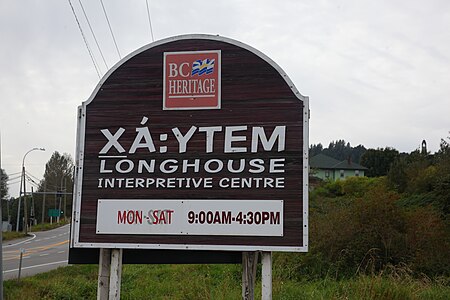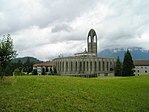X̱á:ytem

X̱á:ytem () is an indigenous archaeological site and the name of a related museum run under the auspices of the Stoːlo people at Hatzic, British Columbia, Canada. X̱á:ytem is approximately 80 kilometres east of Vancouver on Highway 7. It is reached via the bridge at Mission, about 15 kilometres from the border with the US state of Washington. The site was designated in 1992 as a national historic site of Canada for its spiritual value to the Stoːlo people, as well as being one of the oldest discovered habitation sites at approximately 5000 years old. It was listed on the Canadian register of historic places in 2005. It is also known as Hatzic Rock National Historic Site of Canada.
Excerpt from the Wikipedia article X̱á:ytem (License: CC BY-SA 3.0, Authors, Images).X̱á:ytem
Lougheed Highway,
Geographical coordinates (GPS) Address Nearby Places Show on map
Geographical coordinates (GPS)
| Latitude | Longitude |
|---|---|
| N 49.151388888889 ° | E -122.25166666667 ° |
Address
Xa: Ytem Interpretive Centre
Lougheed Highway
V2V 4J5 , Hatzic
British Columbia, Canada
Open on Google Maps



